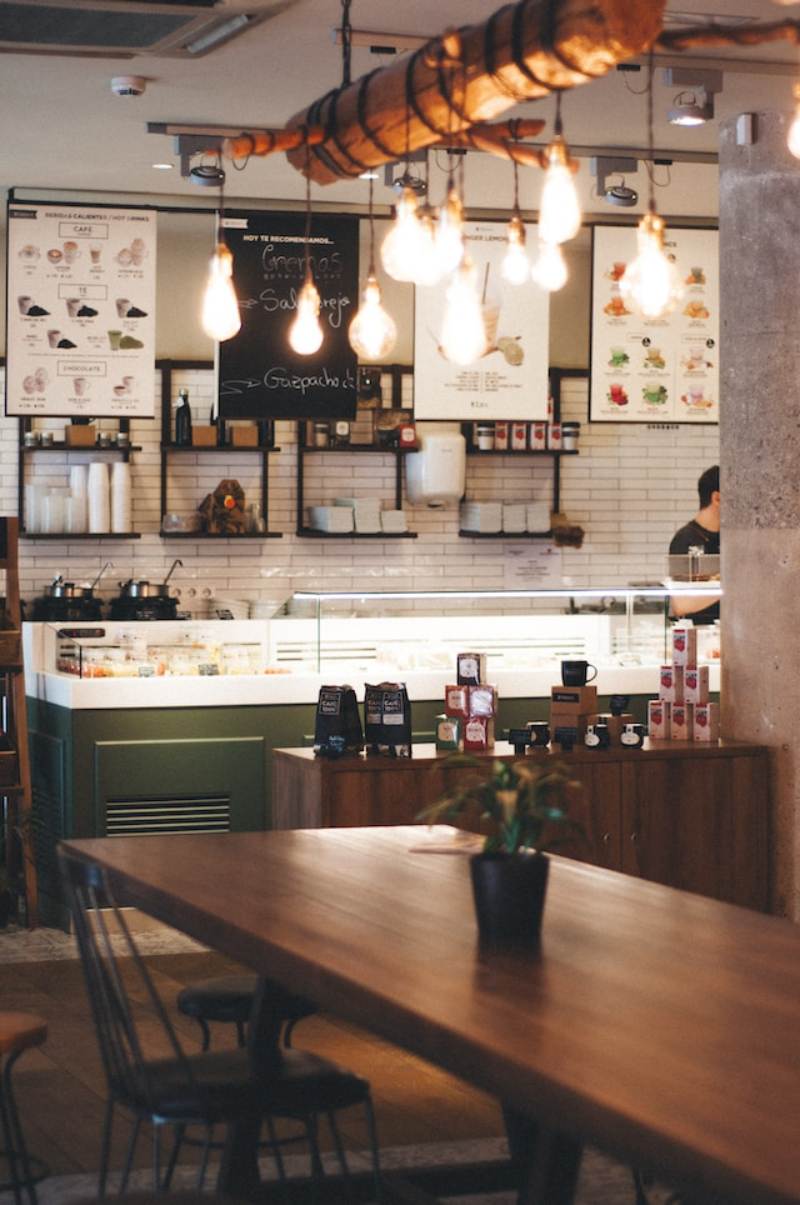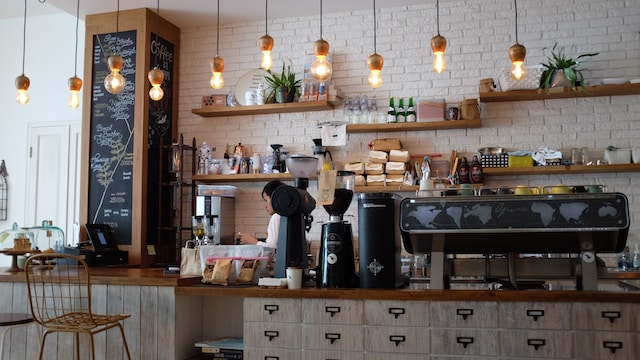
SuperPay helps cafe owners like yourself get paid as quickly as possible. Choose our platform to power your payments & billing.
In the highly competitive world of cafes, customer feedback plays a crucial role in ensuring success and growth. Customer feedback provides valuable insights into the likes, dislikes, and preferences of your patrons, helping you make informed decisions and improve the overall dining experience. In this blog post, we will explore the importance of managing customer feedback in cafes and discuss effective strategies for collecting, analyzing, and responding to feedback. Whether you own a small local cafe or manage a chain of coffee shops, this guide will provide you with practical tips on how to leverage customer feedback to enhance your cafe's reputation and drive customer satisfaction. So, let's dive in and discover the art of managing customer feedback in cafes.
Understanding the Importance of Customer Feedback in Cafes
Customer feedback is an invaluable resource for cafes, as it helps in understanding the needs, preferences, and expectations of customers. By actively seeking and analyzing customer feedback, cafe owners and managers can make informed decisions to enhance the overall dining experience and build stronger customer relationships. Here are some key reasons why understanding the importance of customer feedback is crucial in the cafe industry:
Improving Customer Satisfaction: Customer feedback provides insights into what customers enjoy about their experience at the cafe and what areas need improvement. By addressing customer concerns and implementing changes based on their feedback, cafes can enhance customer satisfaction and loyalty.
Identifying Strengths and Weaknesses: Customer feedback helps in identifying the strengths and weaknesses of the cafe's offerings, ambiance, service, and more. This information enables cafe owners to capitalize on their strengths and address any shortcomings, leading to better overall performance.
Staying Competitive: In a competitive market, understanding customer feedback gives cafes a competitive edge. By listening to their customers and adapting to their preferences, cafes can differentiate themselves from competitors and attract more customers.
Gaining Valuable Insights: Customer feedback provides valuable insights into customer preferences, emerging trends, and changing tastes. This knowledge can help cafes stay ahead of the curve, introduce innovative menu items, and create unique experiences that resonate with their target audience.
Building Customer Loyalty: By actively seeking and incorporating customer feedback, cafes demonstrate that they value their customers' opinions and are committed to continuous improvement. This fosters a sense of loyalty and encourages customers to become advocates for the cafe, recommending it to others and becoming repeat customers themselves.
Enhancing Online Reputation: In today's digital age, online reviews and ratings have a significant impact on a cafe's reputation. By actively managing customer feedback, cafes can respond to reviews, address concerns, and showcase their commitment to customer satisfaction, thereby enhancing their online reputation.
Understanding the importance of customer feedback is the first step toward creating a customer-centric approach in cafes. By recognizing the value of feedback, cafes can unlock a wealth of information that can drive positive changes, boost customer satisfaction, and ultimately, contribute to the long-term success of the business.
How to Collect Customer Feedback
Collecting customer feedback is essential for cafes to gain valuable insights and understand the needs and preferences of their customers. There are various methods and channels through which cafes can collect feedback. In this section, we will explore some effective strategies for collecting customer feedback in cafes:
Using Feedback Cards
One common method is to provide feedback cards or comment cards to customers at different touchpoints, such as at the cash register or on the dining tables. These cards typically include questions about the overall dining experience, food quality, service, ambiance, and suggestions for improvement. Customers can fill out these cards anonymously or with their contact information for follow-up purposes.
Online Surveys and Reviews
In today's digital world, online surveys and reviews are powerful tools for collecting customer feedback. Cafes can create online surveys using platforms like SurveyMonkey or Google Forms and share them through email newsletters, social media channels, or on their website. Online reviews on platforms like Yelp, Google Reviews, or TripAdvisor also provide valuable feedback from customers. It's crucial to actively monitor and respond to online reviews to show that the cafe values customer opinions.
Face-to-Face Conversations
Engaging in face-to-face conversations with customers is an excellent way to gather feedback in real-time. Cafe owners or staff members can proactively approach customers during their visit or after their meal to ask about their experience and any suggestions they may have. This personal interaction not only allows for immediate feedback but also helps in building a rapport with customers.
Suggestion Boxes
Placing suggestion boxes in prominent locations within the cafe encourages customers to drop in their feedback and suggestions. These boxes can be accompanied by blank suggestion cards or slips of paper where customers can write down their thoughts. Suggestion boxes provide an anonymous way for customers to share their opinions and ideas.
By utilizing a combination of these feedback collection methods, cafes can gather a comprehensive range of insights from their customers. It's essential to make the feedback collection process easy, convenient, and accessible to encourage maximum participation. The collected feedback forms the foundation for understanding customer preferences and making informed decisions to improve the cafe's offerings and services.
How to Analyze Customer Feedback
Once cafes have collected customer feedback, the next crucial step is to analyze it effectively. Analyzing customer feedback allows cafes to identify patterns, trends, and areas of improvement. In this section, we will explore strategies for analyzing customer feedback in cafes:
Identifying Common Themes
When analyzing customer feedback, it's essential to identify common themes or topics that arise repeatedly. Look for patterns in the feedback regarding specific aspects of the cafe, such as food quality, service, cleanliness, or ambiance. Categorize the feedback into different themes to gain a clear understanding of what customers appreciate and where improvements are needed.
Understanding Positive Feedback
While negative feedback often grabs attention, it's equally important to focus on positive feedback. Analyze the positive comments to understand what aspects of the cafe are resonating with customers. Identify the strengths and unique selling points that customers appreciate the most. This information can be used to reinforce and enhance those aspects further.
Decoding Negative Feedback
Negative feedback can be challenging to receive, but it provides valuable insights into areas that need improvement. Analyze negative feedback objectively and identify the underlying issues or concerns. Look for recurring themes or problems that customers mention. By understanding the root causes of negative feedback, cafes can take targeted actions to address those issues and improve the overall customer experience.
Using Feedback Analysis Tools
Leveraging technology can significantly streamline the process of analyzing customer feedback. There are various feedback analysis tools available that help cafes aggregate, categorize, and analyze feedback data. These tools use natural language processing (NLP) algorithms to identify sentiments, keywords, and themes within customer feedback, providing cafes with actionable insights in a more efficient manner.
By adopting a systematic approach to analyzing customer feedback, cafes can gain a deeper understanding of their strengths, weaknesses, and areas for improvement. This analysis forms the basis for making informed decisions and taking necessary actions to enhance the cafe's offerings, operations, and overall customer satisfaction.

How to Respond to Customer Feedback
Responding to customer feedback is a critical aspect of managing customer satisfaction in cafes. It demonstrates that the cafe values its customers' opinions and is committed to addressing their concerns. In this section, we will explore effective strategies for responding to customer feedback:
Responding to Positive Feedback
When receiving positive feedback, it's important to express gratitude and appreciation to the customer. Respond promptly, thanking them for their kind words and acknowledging their positive experience. Personalize the response by mentioning specific details mentioned in their feedback. This not only shows appreciation but also encourages customers to continue sharing their positive experiences with others.
Addressing Negative Feedback
Negative feedback should be handled with care and sensitivity. Responding promptly and empathetically is key to resolving the customer's concerns and preserving their relationship with the cafe. Begin by expressing genuine concern for their experience and apologize for any inconvenience caused. Take the conversation offline by providing contact information for further discussion. Work towards finding a solution or offering compensation if necessary, and assure the customer that their feedback will be taken seriously.
Ensuring Constructive Communication
When responding to customer feedback, it's crucial to maintain a professional and respectful tone. Avoid getting defensive or argumentative, even in the face of unjustified criticism. Instead, focus on understanding the customer's perspective and addressing their concerns. Be open to feedback, ask clarifying questions if needed, and provide helpful information or explanations to resolve any misunderstandings.
Publicly Acknowledging Feedback
Publicly acknowledging customer feedback, both positive and negative, demonstrates transparency and shows that the cafe values customer opinions. Respond to online reviews and comments on social media platforms, thanking customers for their feedback and addressing any concerns raised. This not only helps in resolving issues but also showcases the cafe's commitment to customer satisfaction to potential customers who may be reading the reviews.
By responding to customer feedback in a prompt, empathetic, and constructive manner, cafes can turn negative experiences into positive ones and build stronger relationships with their customers. Effective communication and genuine concern for customer satisfaction are vital for maintaining a positive reputation and fostering customer loyalty.
How to Implement Changes Based on Customer Feedback
Implementing changes based on customer feedback is a crucial step in the process of managing customer feedback in cafes. By taking customer suggestions and concerns into account, cafes can continuously improve their offerings and provide a better experience for their customers. In this section, we will explore strategies for successfully implementing changes based on customer feedback:
Prioritizing Feedback-Based Changes
Review the collected feedback and prioritize the changes based on the frequency and severity of the feedback. Identify the areas that have the most significant impact on customer satisfaction and prioritize those changes first. This ensures that the most crucial issues are addressed promptly and effectively.
Involving Staff in Implementing Changes
In order to successfully implement changes, it is important to involve the cafe staff. Share the feedback with the staff members and communicate the planned changes. Encourage their input and suggestions on how to improve the cafe's operations and service. By involving the staff in the process, they will feel valued and motivated to contribute to the success of the changes.
Communicating Changes to Customers
Once the changes have been implemented, it is important to communicate them to your customers. Use various channels such as your website, social media platforms, and email newsletters to inform customers about the changes. Highlight how these changes were based on their feedback and emphasize how the cafe is committed to continuously improving the customer experience.
Evaluating the Impact of Changes
Regularly evaluate the impact of the implemented changes to gauge their effectiveness. Collect feedback from customers after the changes have been made to assess their satisfaction and identify any further areas for improvement. Monitor key performance indicators such as customer satisfaction scores, repeat visits, and online reviews to measure the impact of the changes on the cafe's overall performance.
By implementing changes based on customer feedback, cafes can demonstrate their commitment to customer satisfaction and continuous improvement. This proactive approach not only enhances the customer experience but also builds customer loyalty and sets the cafe apart from competitors. Remember, managing customer feedback is an ongoing process, and cafes should strive to continuously collect feedback and make necessary changes to stay ahead of customer expectations.


